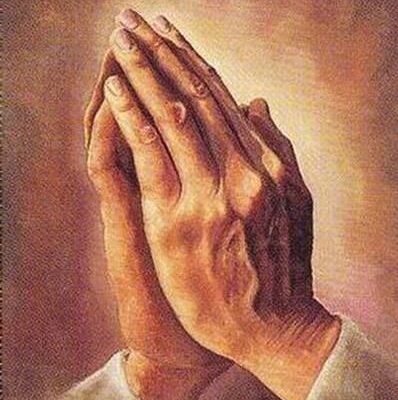Throughout history, the Catholic Church has produced countless saints, blesseds, and servants of God who stood against the atrocity of slavery. Their lives testify to the Gospel’s call to uphold the dignity of every human being, made in the image and likeness of God. I wish to share these heroic figures with the reader and examine how their work aligns with Catholic social teaching, offering inspiration for modern efforts against slavery and human trafficking.
St. Peter Claver (1581–1654)
Known as the “Slave of the Slaves,” St. Peter Claver dedicated his life to ministering to enslaved Africans brought to Cartagena, Colombia. As a Jesuit priest, he met the slave ships arriving in port, often boarding them to provide food, water, and medical care to those who had endured horrific journeys.
St. Peter Claver baptized over 300,000 enslaved individuals and offered them spiritual and physical solace. His actions were not popular but despite criticism and personal risk, he persisted, embodying the Church’s teaching that every person possesses inherent dignity. He famously said, “We must speak to them with our hands before we try to speak to them with our lips.” Canonized in 1888, St. Peter Claver remains a powerful symbol of the Church’s commitment to justice and mercy.
St. Josephine Bakhita (c. 1869–1947)
Born in Sudan, St. Josephine Bakhita endured the horrors of slavery as a child, forcibly taken from her family and sold multiple times. After her eventual liberation, she embraced the Catholic Faith and joined the Canossian Sisters. The good deeds of the man who purchased her freedom went unknown until the saint’s writings were later discovered.
St. Bakhita’s life is a testament to hope and forgiveness. Her writings and teachings continue to inspire the Church’s fight against modern slavery and human trafficking. Canonized in 2000, she is celebrated as the patron saint of victims of slavery and human trafficking.
St. John de Matha (1154–1213)
A French priest, St. John de Matha founded the Order of the Most Holy Trinity for the Redemption of Captives (Trinitarians) in response to the widespread enslavement of Christians during the Crusades. His order ransomed thousands of captives, often at great personal cost.
St. John’s mission exemplifies the Church’s belief in the sanctity of life and the duty to rescue those in bondage. His order’s work continues today through charitable efforts supporting the marginalized and oppressed.
Blessed Henriette DeLille (1812–1862)
A free woman of color in New Orleans, Henriette DeLille founded the Sisters of the Holy Family to serve marginalized Black communities, including enslaved individuals. Despite systemic racism and prejudice, she dedicated her life to education, healthcare, and spiritual care for those denied basic human rights.
Her cause for sainthood highlights her courageous advocacy for human dignity. Beatified in 2010, Henriette’s legacy continues to inspire efforts toward racial justice and reconciliation.
Servant of God Julia Greeley (c. 1833–1918)
Born into slavery in Missouri, Julia Greeley gained her freedom after the Civil War and later converted to Catholicism. Despite her own poverty, Julia became known as “Denver’s Angel of Charity,” distributing aid to the poor, including former slaves and their descendants.
Julia’s selflessness reflected the Church’s call to serve the least among us. Her cause for canonization highlights her remarkable witness to love and charity.
St. Vincent de Paul (1581–1660)
Known for his profound care for the poor, St. Vincent de Paul worked tirelessly to redeem enslaved Christians captured by pirates in North Africa. He facilitated their rescue and often negotiated their release himself.
St. Vincent’s legacy includes the founding of the Vincentians and the Daughters of Charity, orders dedicated to serving the marginalized. His life reminds us of the Church’s enduring mission to fight injustice and care for the oppressed.
Bartolomé de las Casas (1484–1566)
While not canonized, Bartolomé de las Casas’ contributions to the fight against slavery are profound. A Dominican friar and missionary, he initially participated in the exploitation of Indigenous peoples in the Americas but underwent a radical conversion.
De las Casas became a fierce advocate for Indigenous rights, denouncing the enslavement and mistreatment of Native peoples. His writings, including A Short Account of the Destruction of the Indies, influenced Catholic teaching and inspired papal condemnations of slavery.
Catholic Teaching on Slavery
The Catholic Church has long condemned slavery, even if not always consistently practiced by its members. Papal documents such as Pope Eugene IV’s Sicut Dudum (1435) and Pope Gregory XVI’s In Supremo Apostolatus (1839) unequivocally denounced slavery and the slave trade. These teachings highlight the Church’s understanding of human dignity as rooted in creation.
In Fratelli Tutti (2020), Pope Francis reiterated the Church’s opposition to modern forms of slavery, calling for global solidarity to end human trafficking and exploitation. “Human trafficking is a crime against humanity,” he wrote, urging Catholics to act as witnesses to justice and mercy.
Although slavery has been abolished in most countries, modern slavery persists in forms like human trafficking, forced labor, and debt bondage. The Church continues to combat these injustices through organizations like Caritas Internationalis and the Talitha Kum network, which work to rescue victims and raise awareness.
The lives of saints who opposed slavery remind us of the power of faith and action. Their stories challenge us to confront injustices in our own time and to be voices for the voiceless. By learning about their witness, we are inspired to uphold the dignity of all people and work toward a world where no one is enslaved.
As we honor these saints and servants of God, let us follow their example, living the Gospel in word and deed to defend the dignity of every human being. In the words of St. Bakhita, “Be good, love the Lord, pray for those who do not know Him. What a great grace it is to know God!”
Image from Wikipedia Commons


